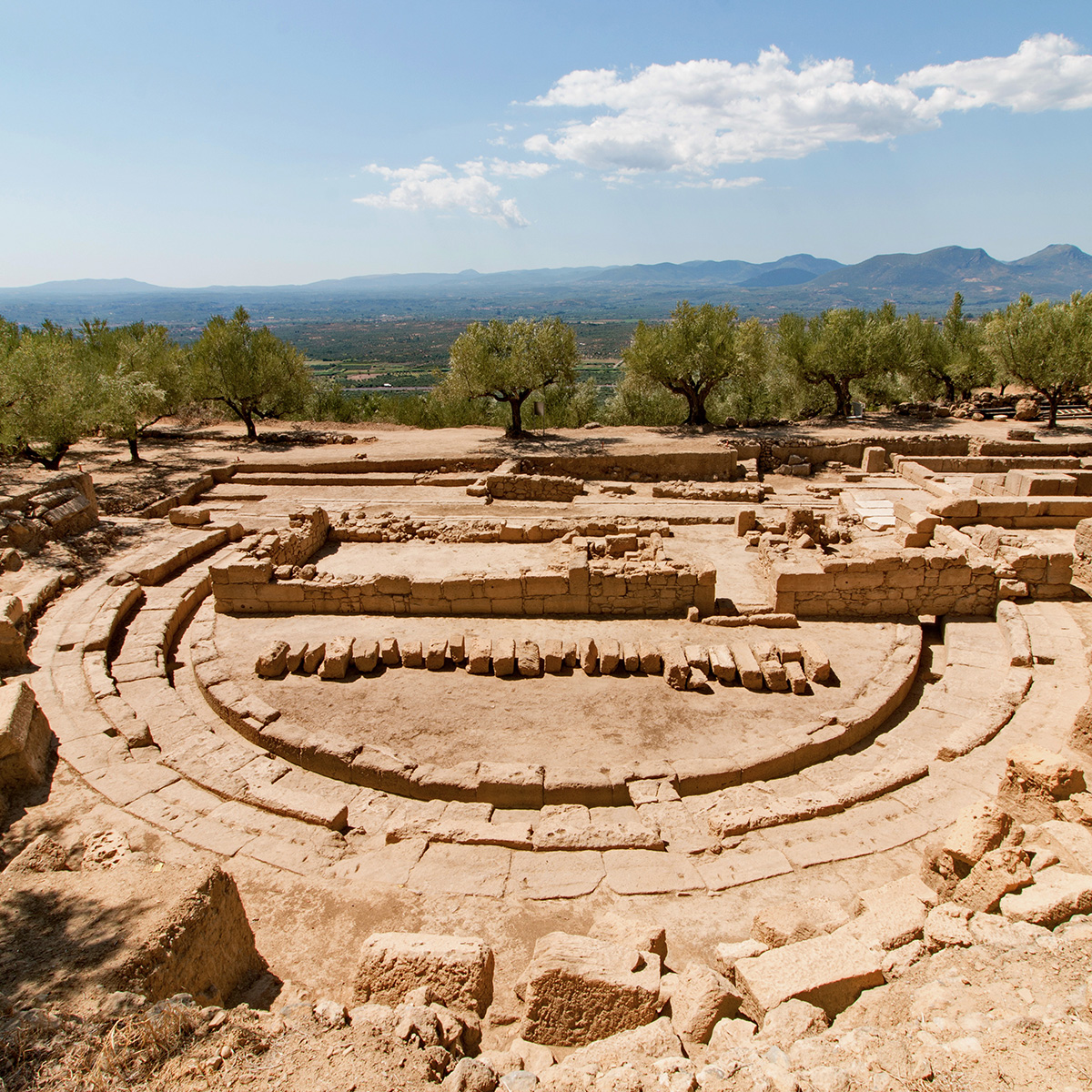
Ancient Thouria, Ellinika, Antheia, Aipeia, Pidima
12 stops

24 131 Kalamata
27210 22534, 27210 26770
efames@culture.gr
24 100 Kalamata
27210 63100, 27210 26410
efames@culture.gr

The archaeological site of ancient Thouria is located ca. 15km north of Kalamata, on top of a 1500m long ridge, named Ellinika. An extensive prehistoric settlement has been located at the southernmost and lowest end of the ridge, while at the eastern side an extensive cemetery has been discovered and partly excavated; it comprises monumental mycenaean chamber tombs. Not far, to the east of the mycenaean cemetery, two early Middle Helladic tumuli have been investigated, with richly adorned burials. The hegemonic tholos tomb of Antheia has been excavated at the western side of the ridge. Despite having been looted in antiquity, it did contain a wealth of archaeological evidence, both of prehistoric – early historical times, as well as of later historical periods of Messenia. Offerings found in the tomb indicate that it had been used for hero-cult practices. The acropolis of ancient Thouria is situated at the northern side of the ridge. Thouria was the most significant city of ancient Messenia prior to the foundation of Messene in 369 BC. Its extensive, though not fully excavated, visible remains (koilon and skene of the theatre, traces of an ancient paved road, a large cistern dug in the ground and building remains), the remains of a monumental late roman bath complex at the locality called Loutra, west of the hill, as well as the splendid view towards the Messenian gulf and Pamisos’ plain, highlight Thouria’s importance as a thriving centre of ancient Messenia. The city’s acme during the late classical – hellenistic period is attested mainly by the remains of public buildings and of a temple dedicated to Asκlepius and Hygeia, which was recently brought to light at Panagitsa, on the west foothills of Ellinika ridge.